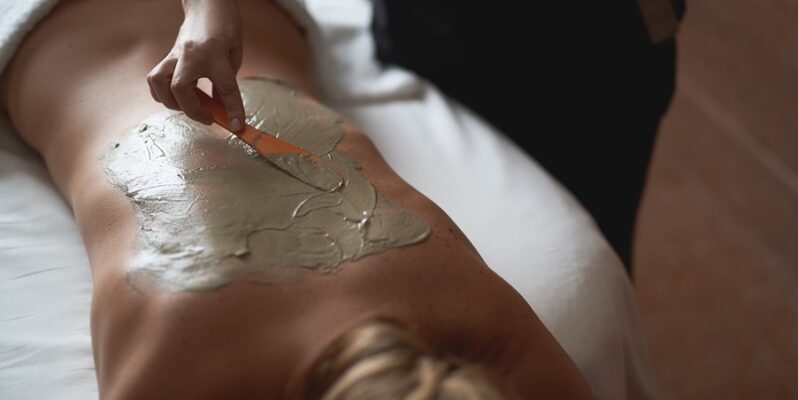
Cryotherapy — also called Cold Therapy — involves exposure of the body or body parts to (extreme) cold i.e. low temperatures in order to treat a variety of ailments and discomforts, such as pain, inflammation, sprains, swellings, mental conditions, skin problems, and some cancers, such as prostate and liver cancer. Cryotherapy can be applied internally and externally.

Mind that Cold Therapy has been used for ages, in many ancient cultures, and is not something new. For instance, there’s evidence that some forms of Cryotherapy have been used in ancient Egypt, in the Mesoamerican Maya civilization, in the Roman Empire, and in ancient Greece.
Nevertheless, one needs to distinguish between three types of Cryotherapy:
- Local surgical use on body parts to destroy abnormal tissue internally or externally of the body;
- Local use of cold packs to cool down body parts in order to reduce swellings, inflammation, and pains;
- Whole-Body Cryotherapy by exposing the entire body to low temperatures for a range of health benefits of which we will talk further below in this post.
Surgical Cryotherapy
This type of therapy is rather called Cryosurgery or Cryoablation, and is used in contemporary medicine. A healthcare provider will apply extreme cold to freeze and destroy abnormal tissue locally, typically using liquid nitrogen or argon gas to create the extremely low temperatures.
Cryotherapy is used to treat a variety of skin conditions, such as warts, skin tags or dark spots, but it may also be used to treat certain cancers, such as prostate, liver, and bone cancer. This therapy can be used internally and externally.
Non-Surgical Cryotherapy – Local Use
Ice packs or cold packs may be used on individual body parts, such as the knees, lower back, ankles, and so on, in order to reduce swelling, inflammations, and pains. Typically this is carried out after a sprain or injury, or after intense physical activity.
In fact, when the body or body parts are exposed to extreme cold, the blood vessels are narrowed, which make less blood flow to the areas of swelling which subsequently reduce inflammation and pains.
Non-Surgical Cryotherapy – Immersion of the Entire Body
Whole-Body Cryotherapy can be applied by exposing oneself outdoors in cold environments, for instance, by taking ice baths, cold baths, cold showers (under a waterfall or with the help of buckets filled with cold water), by whole-body immersion or swimming in cold water (in a lake, the sea, a creek, and so on, often called winter swimming), reposing in cold air, or by using snow to cover the body. Today, you will also find special controlled cold chambers (Cryochambers) to induce the same effects.

This treatment is quite often used by professional athletes immediately after an intense workout or competition, believing that it benefits recovery, reduces muscle damage and discomfort, and alleviates joint and muscle soreness. A well-known advocate of this practice is Wim Hof, who created the Wim Hof Method.
Mind that self-applied Whole-Body Cryotherapy should be practiced by very gradual exposure to low temperatures over a longer period of time in order to let the body get used to it and avoid adverse effects, such as shock, hypothermia, cardiac arrest, or even sudden death.
It’s thought that other benefits of Whole-Body Cryotherapy may include speeding up metabolism (and subsequent weight loss), better sleep quality, better mood, having more energy, alleviation of respiratory problems, rheumatism and fibromyalgia, improved resilience and immune system, augmented willpower, lower overall blood pressure, increased focus and concentration ability, improved self-esteem, and reduction of stress, anxiety, depression, and certain mental health conditions.
Further Thoughts on Non-Surgical Cryotherapy
Although studies suggest that prolonged and/or longtime use of local or Whole-Body Non-Surgical Cryotherapy may have adverse effects for the body (such as frostbite or delayed regeneration of cell tissues), it seems indeed to help avoid muscle soreness, alleviate pains, and speedup recovery if applied within the first twenty-four hours after an intense physical activity.

Nevertheless, medical science is still not conclusive regarding this subject. In fact, there are ideas that deliberately hindering or stopping the inflammatory response of the body may impede its natural responses and recovery mechanisms, as such interfering with proper health recovery.
In any case, it’s neither clear how long Cryotherapy should be applied (either topical or as a whole-body immersion), how often to do it, how long, and with what temperatures. As a whole, practitioners and “experts” alike, all have their own experiences and personal ideas about it. This makes the “Art of Cryotherapy” a bit vague, to say the least.
Mind also that this type of Whole-Body Cryotherapy is contraindicated for those who suffer from cardiovascular conditions and diseases, arterial hypertension, seizures, acute infectious diseases, allergy for cold, and severe mental disorders.














